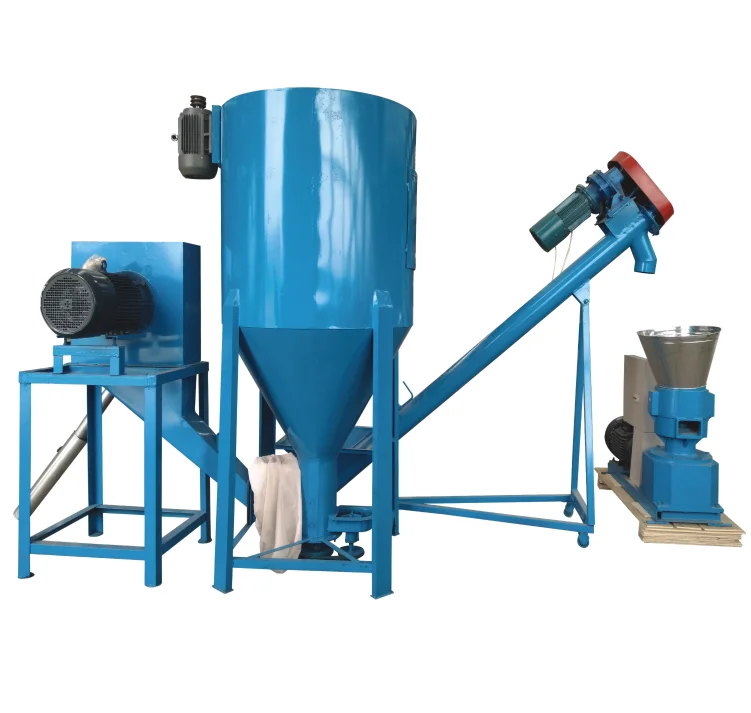animal feed pellet mill machine
Dec . 07, 2024 14:46 Back to list
animal feed pellet mill machine
Understanding Animal Feed Pellet Mill Machines
The increasing demand for high-quality animal feed has driven the innovation and popularity of animal feed pellet mill machines. These machines play a pivotal role in the production of feed pellets, which are essential for livestock, poultry, and other animals. As the livestock industry grows, understanding how these machines work and their importance can offer insights into sustainable farming practices and efficient feed production.
What is an Animal Feed Pellet Mill Machine?
An animal feed pellet mill machine is a specialized piece of equipment designed to convert various raw materials into uniform pellets suitable for animal consumption. The primary ingredients often include grains, legumes, vitamins, minerals, and other nutritional components. The role of the pellet mill is to compress and extrude these ingredients under high pressure and temperature, resulting in durable and palatable pellets.
Pellet mills vary in size and complexity, from small, portable models for personal use to large industrial machines designed for mass production. The choice of pellet mill depends on the scale of production and the specific requirements of the feed being produced.
How Does It Work?
The operation of an animal feed pellet mill involves several key processes
1. Raw Material Preparation The first step in pellet production is the preparation of raw materials. This might include grinding grains and mixing them with other ingredients to achieve the desired nutrient composition. Properly prepared raw materials enhance the quality of the resulting pellets.
2. Conditioning Once the raw ingredients are mixed, they undergo conditioning. This process involves adding steam or water to the mixture, which helps soften the materials and makes them easier to compress. This is a critical step, ensuring that the pellets bind together well once formed.
3. Pelleting The conditioned mixture is then fed into the pellet mill, where it is subjected to high pressure and temperature. Inside the mill, the mixture is pushed through die holes, shaping it into uniform pellets. The temperature during this stage can also help eliminate pathogens, enhancing the safety and health benefits of the feed.
animal feed pellet mill machine

4. Cooling and Drying After the pelleting process, the hot pellets need to be cooled to prevent them from degrading. Cooling can be achieved using air or water cooling systems. Proper cooling also helps to reduce moisture content, ensuring the pellets are stable and have a longer shelf life.
5. Packaging and Storage Once cooled, the pellets are ready for packaging. Proper packaging is essential to protect the feed from environmental factors and pests. Pellets should be stored in a dry, cool place to maintain their quality until they are ready to be fed to animals.
Benefits of Using Pellet Mills
1. Improved Feed Efficiency Pellets are more compact and easier to transport than loose feed. Their uniform size ensures that every animal receives the same amount of nutrition, leading to better growth rates and overall health.
2. Reduced Waste Pelleting reduces feed wastage as animals are less likely to pick and choose their food. The increased palatability of pellets means that more feed is consumed, which can lead to cost savings for farmers.
3. Enhanced Nutritional Value The pelleting process can enhance the digestibility of nutrients, making them more accessible to animals. This is crucial in commercial farming where optimal growth and production are desired.
4. Pathogen Control The heat generated during the pelleting process helps to destroy harmful pathogens and molds present in raw materials, creating a safer feed product.
Conclusion
Animal feed pellet mill machines are essential tools in modern animal husbandry. They facilitate the production of high-quality, efficient, and safe animal feed. With the growing concerns about sustainability and food security, investing in these machines not only supports economic farming practices but also contributes to better animal welfare. Producers can adapt their operations to meet changing market demands by understanding the intricacies of these machines. As the global demand for meat and other animal products continues to rise, the role of pellet mills will undoubtedly become even more significant in ensuring a reliable food supply chain.
-
Hot Sale 24 & 18 Door Rabbit Cages - Premium Breeding Solutions
NewsJul.25,2025
-
Automatic Feeding Line System Pan Feeder Nipple Drinker - Anping County Yize Metal Products Co., Ltd.
NewsJul.21,2025
-
Automatic Feeding Line System Pan Feeder Nipple Drinker - Anping County Yize Metal Products Co., Ltd.
NewsJul.21,2025
-
Automatic Feeding Line System - Anping Yize | Precision & Nipple
NewsJul.21,2025
-
Automatic Feeding Line System - Anping Yize | Precision & Nipple
NewsJul.21,2025
-
Automatic Feeding Line System-Anping County Yize Metal Products Co., Ltd.|Efficient Feed Distribution&Customized Animal Farming Solutions
NewsJul.21,2025






